
If you own a car, you may have wondered, “Are headlight dust caps necessary?”. These small covers are designed to protect the headlight bulbs from dust, dirt, and other debris. In this article, we’ll explore the reasons why headlight dust caps are important.
Are Headlight Dust Caps Necessary?
Headlights are a critical part of your car, providing visibility on the road. Unfortunately, they are also susceptible to damage caused by dust and other particles.
As dust accumulates, it can reduce the effectiveness of the headlights. This causes the headlight to become dimmer and less effective. Over time, this can lead to more serious issues such as corrosion and other damage.
10 Reasons Why Dust Caps Are Necessary for Your Headlights
1) Protection from dust and dirt
Headlight dust caps provide a layer of protection. This protection helps keep dust and dirt from collecting on your headlights. This helps to keep your headlights looking clean and clear. This provides better visibility when driving.

2) Protection from moisture
Headlight dust caps can help protect your headlights from moisture and other environmental elements. This helps to keep your headlights from becoming foggy or cloudy. This increases visibility during rainy weather.
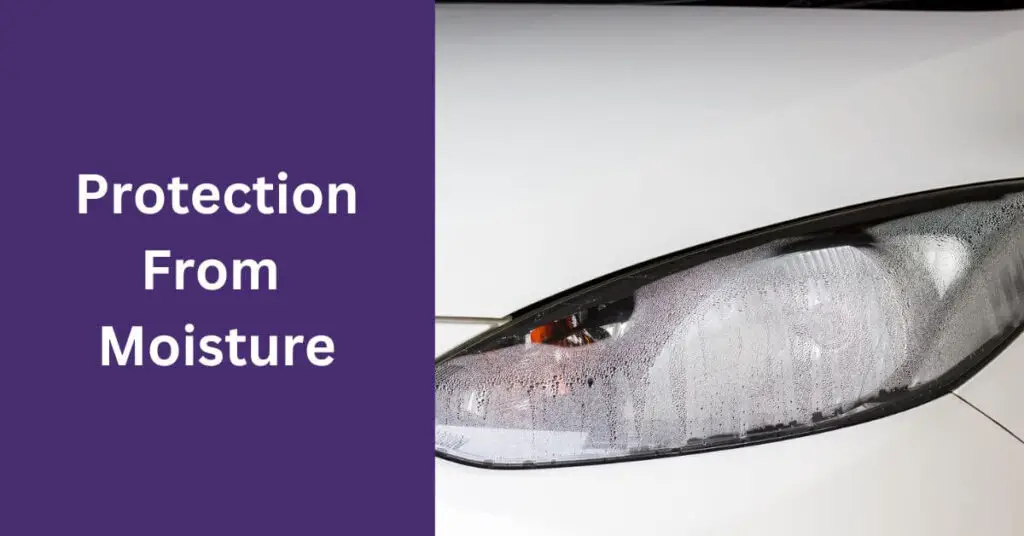
Concerning moisture, it usually causes vehicle headlights to reduced visibility. This is a really big hassle for drivers. Also, for their pockets – when they visit the mechanics to get a fix. For such a context, we have brought for you 8 Ways to Remove Moisture from Car headlights Without Opening . Just learn and do it yourself!
3) Protection from debris
Headlight dust caps can help to protect your headlights from debris. These debris includes dirt, rocks, and other particles. This helps to keep your headlights from becoming scratched or damaged. This provides better visibility and a longer-lasting headlight.

4) Protection from UV rays
They can help to protect your headlights from UV rays. This can cause fading and discoloration. It keeps your headlights looking new and clear, providing better visibility while driving.

5) Improved durability
Headlight dust caps can help to extend the life of your headlights. This is because they provide an extra layer of protection. This also helps to keep dust and dirt from collecting on the headlights.
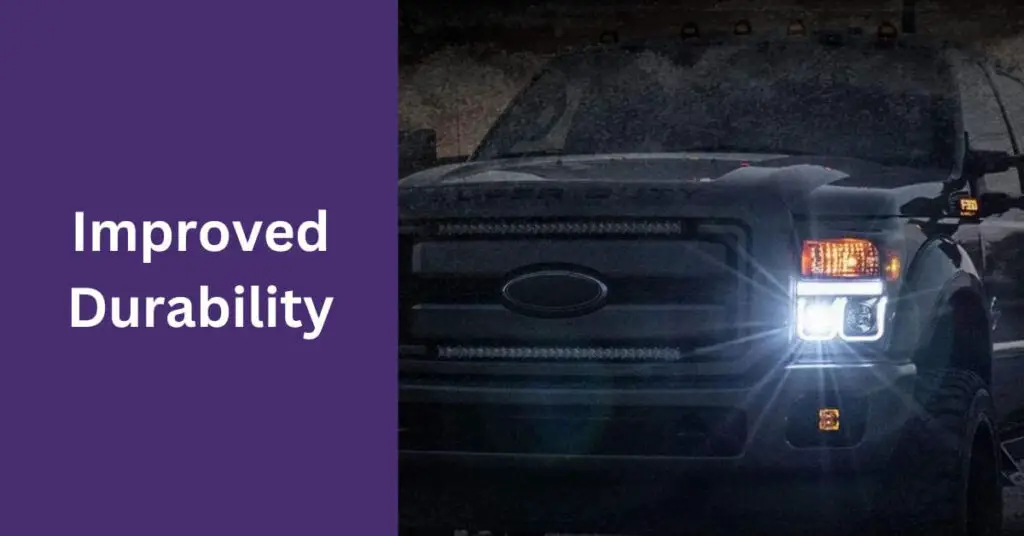
6) Improved appearance
Headlight dust caps can help to give your headlights a more uniform appearance. This helps to give your car a more polished look and can help to make it look newer.
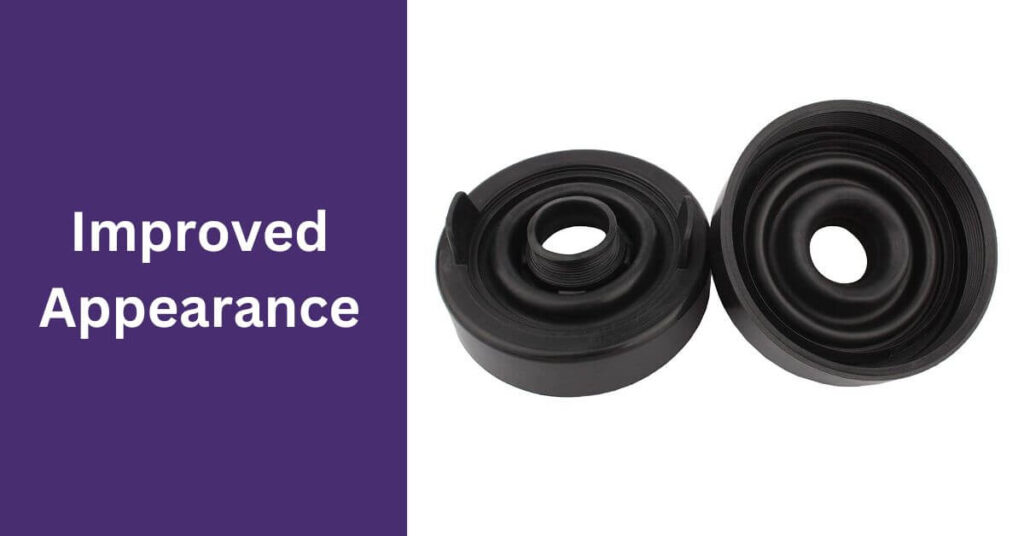
7) Protection from insects
Headlight dust caps can help to keep insects from getting inside your headlights. This can help to prevent bug splatter or other debris from collecting on your headlights. It can also reduce visibility while driving.

8) Easier maintenance
Headlight dust caps can make it easier to maintain your headlights. This is because they provide an extra layer of protection. This protection makes it easier to clean and remove dust, dirt, and debris.

Additionally, they can help to reduce the amount of time needed to clean your headlights. This makes it easier to keep your headlights looking new.
Types of Dust Caps for Headlights
1) Plastic Dust Caps
Plastic dust caps are the most affordable option and are made of hard plastic material. They are designed to be easy to install, making them a great choice for budget-conscious consumers.
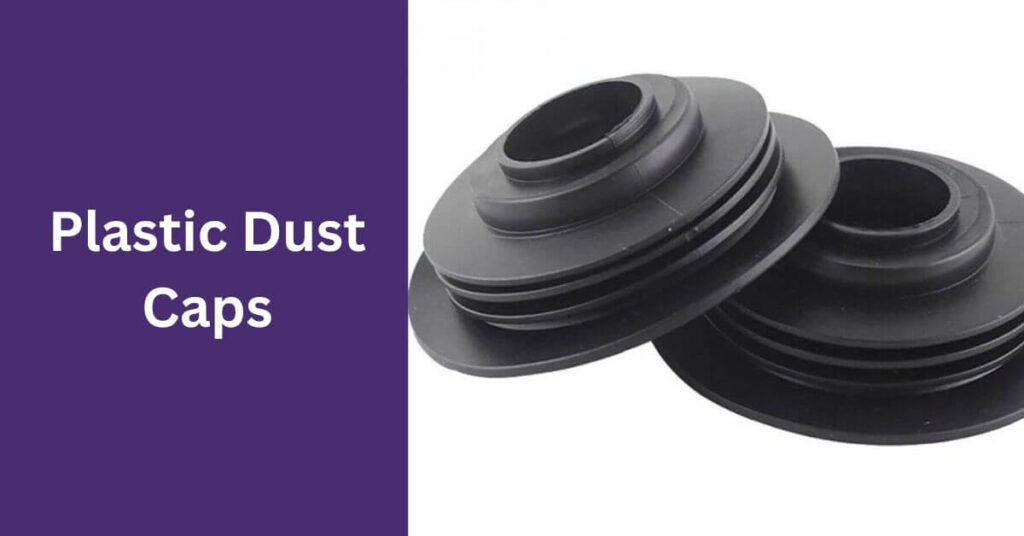
The downside is that they don’t offer much protection from the elements and can become brittle over time.
Pros: Affordable, easy to install
Cons: Poor protection from the elements, can become brittle over time
2) Silicone Dust Caps
Silicone dust caps are a step up from plastic caps in terms of protection and durability. They are made of a soft silicone material that conforms to the shape of the headlight.
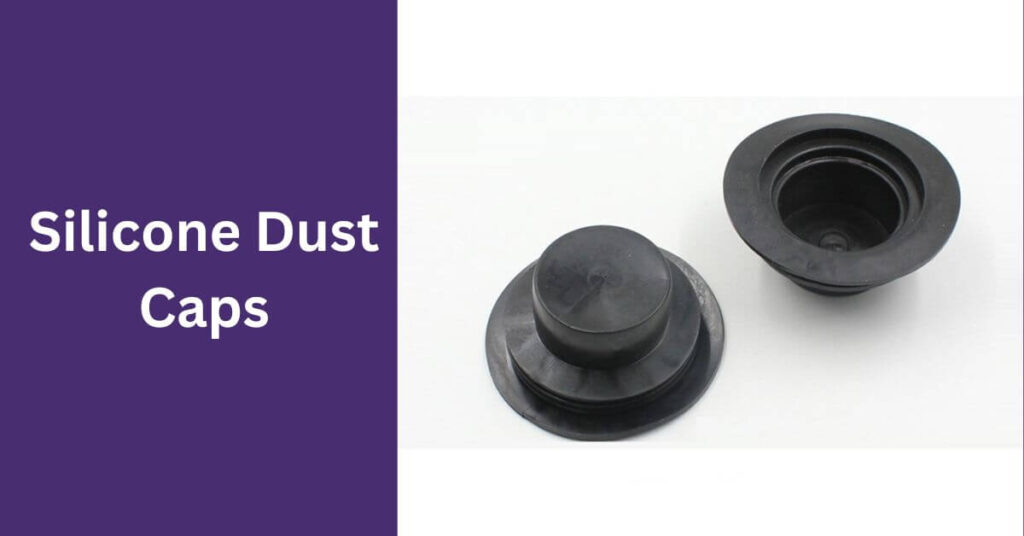
They are more resistant to the elements. This makes them a great choice for areas with high humidity or rain. The downside is that they can be more expensive than plastic dust caps.
Pros: Better protection from the elements, better fit
Cons: More expensive than plastic caps
3) Metal Dust Caps
Metal dust caps are the most durable option. They are best suited for harsh environments. They are made of a heavy-duty metal material that offers maximum protection from the elements. They can last for years.
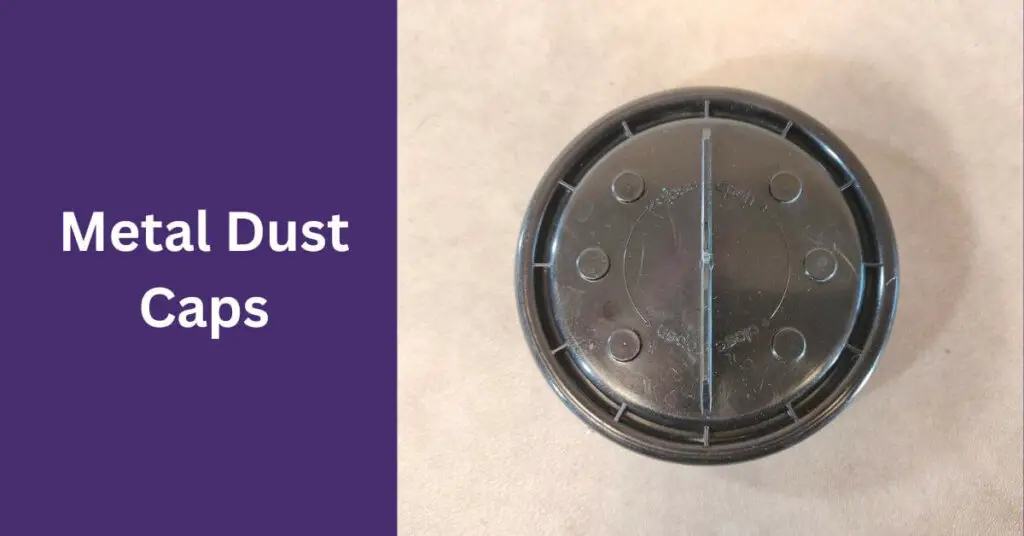
The downside is that they can be very expensive and can be difficult to install.
Pros: Maximum protection from the elements, can last for years
Cons: Very expensive, difficult to install
4) Rubber Dust Caps
Rubber dust caps are a good middle ground between plastic and metal caps. They are made of a thick rubber material that offers decent protection from the elements. While still being relatively affordable. The downside is that they can be difficult to install and may not last as long as metal dust caps.
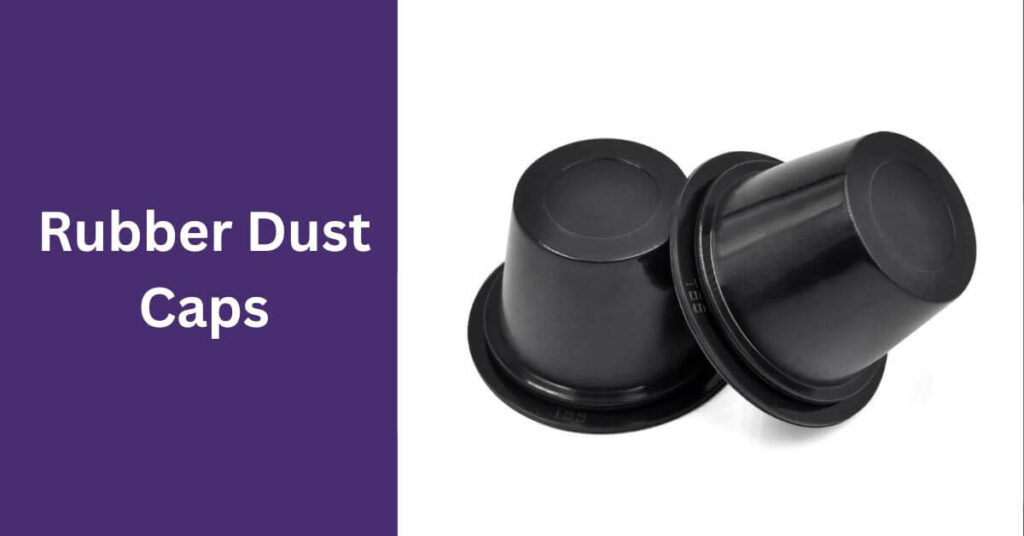
Pros: Decent protection from the elements, relatively affordable
Cons: Difficult to install, may not last as long as metal dust caps
Benefits of Built-in Dust Caps
Built-in dust caps are beneficial for a number of reasons. They protect the valve stem from dirt and debris. This dirt and debris can damage the stem and lead to air leakage.
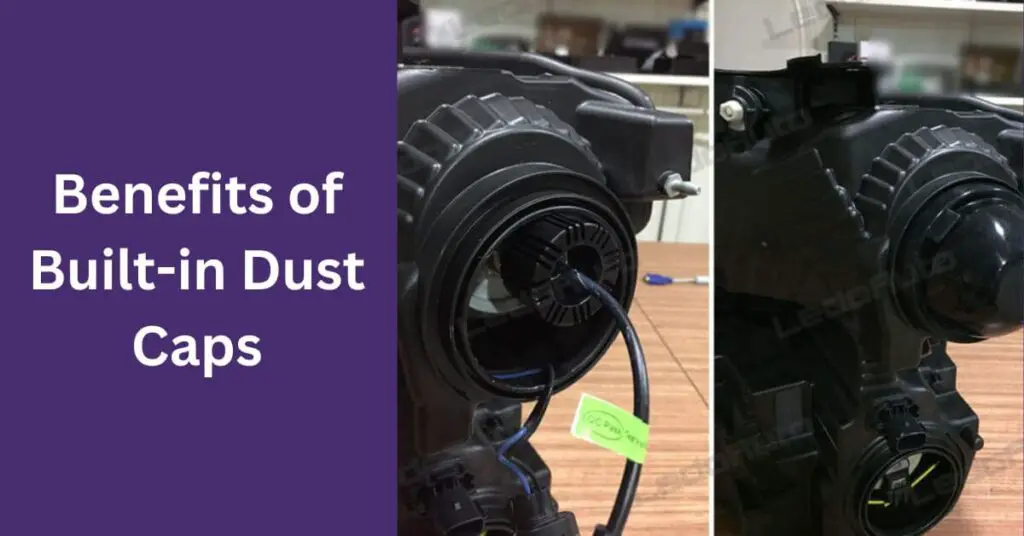
They help to keep dirt and debris out of the tire. This can cause the tire to wear faster. Finally, they provide a more streamlined look for the vehicle.
The legality of Built-in Dust Caps
In most states, it is legal to have built-in dust caps on your vehicle. However, some states have specific laws regarding the use of dust caps.
For example, in California, it is illegal to have dust caps that are not properly secured.
Installation of Dust Caps
Now that you know the answer to “Are headlight dust caps necessary?” Let us discuss how you can install them.
Step-by-Step Instructions on How to Install Dust Caps
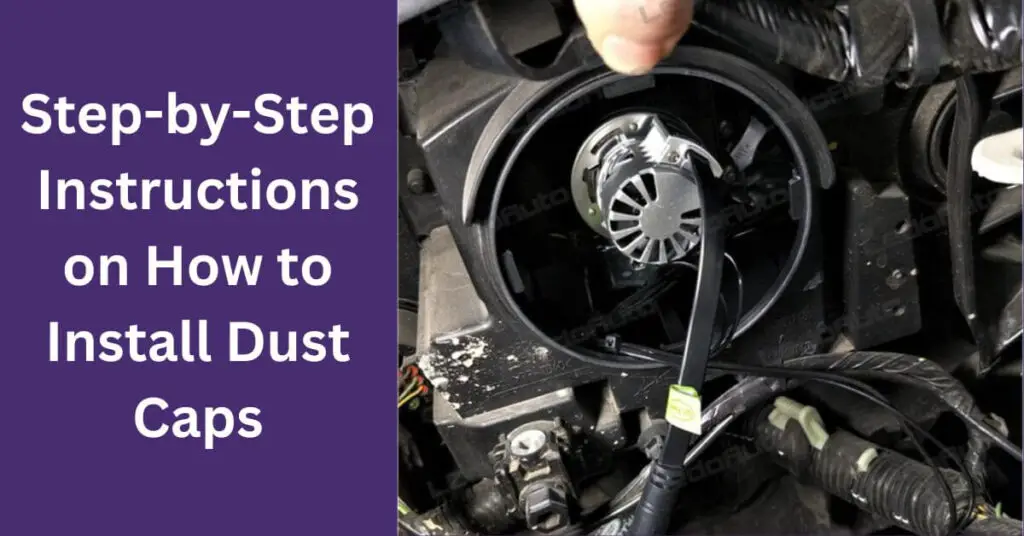
1. Choose the Right Dust Cap
Start by selecting the appropriate dust cap for the wheel you’re installing it on. Dust caps come in different sizes and materials. So make sure to choose the one that’s compatible with your wheel.
2. Remove the Old Dust Cap
Unscrew the old dust cap from the wheel and remove it. If it’s stuck, use a flathead screwdriver to carefully pry it off. Take care not to damage the wheel in the process.
3. Clean and Prep the Wheel
Once the old dust cap is removed, use a cloth and some rubbing alcohol to clean the wheel. Make sure to get rid of any dirt, debris, and corrosion that may have built up over time.
4. Place the Dust Cap on the Wheel
Line up the dust cap with the wheel and press it into place. Make sure the dust cap is secure and that there are no gaps between it and the wheel.
5. Secure the Dust Cap
Finally, use a screwdriver to tighten the screws on the dust cap. This will help ensure a secure fit and prevent it from coming loose.
See this tutorial to install dust caps with quick tips and tricks.
Common Mistakes to Avoid During Installation
1. Not Choosing the Right Dust Cap
Not all dust caps are suitable for all wheels. Make sure to select a dust cap that is compatible with the wheel you’re installing it on.
2. Not Cleaning the Wheel
Before installing the dust cap, make sure to clean the wheel and remove any dirt, debris, or corrosion. If this is not done, it can cause the dust cap to become loose and fall off.
3. Not Securing the Dust Cap
After placing the dust cap on the wheel, make sure to tighten the screws to ensure a secure fit. Not doing this can cause the dust cap to come loose and fall off.
4. Using Too Much Force
When installing the dust cap, be sure not to use too much force. Excessive force can cause the dust cap to become damaged or break.
Factors To Consider When Choosing Dust Caps
1) Size
In the context of “are headlight dust caps necessary” one of the biggest factors is size. Dust caps come in a variety of sizes. So make sure the caps you select are the correct size for your headlight assembly.
It is important to measure the headlight assembly to ensure that the caps are the right size and fit properly.
2) Material
Another factor to consider when selecting dust caps is the material they are made from. Dust caps can be made from a variety of materials, including plastic, rubber, and metal.
Different materials have different advantages and disadvantages. So it is important to select a material that is durable and suitable for the environment they are being used in.
3) Compatibility with headlight assembly
The final factor to consider when selecting dust caps is their compatibility with the headlight assembly. Different dust caps are designed to be used with different types of headlight assemblies.
So it is important to make sure the caps you select are compatible with your headlight assembly.
Alternatives to dust caps
Headlight Covers
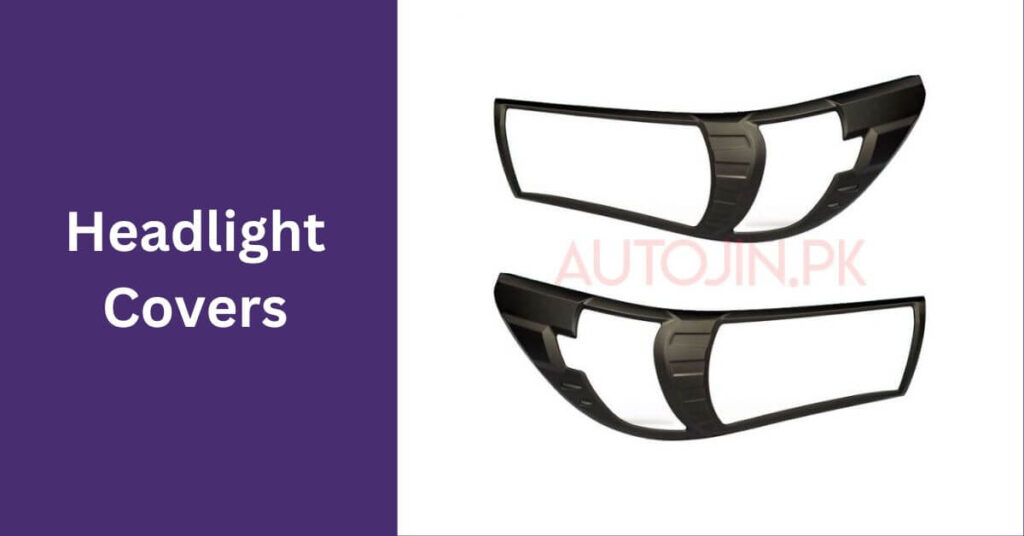
Advantages:
Headlight covers are a popular and low-cost option for protecting headlights from dust and moisture. They are easy to install and can be quickly removed whenever necessary. Moreover, they come in a variety of colors and designs. This allows you to customize the look of your vehicle.
Disadvantages:
Headlight covers can be difficult to remove and can sometimes leave a residue on the headlights. They may not be as effective at protecting the headlights from dust and moisture as other alternatives.
Additionally, they may not provide the same level of protection as other options.
Headlight Sealant
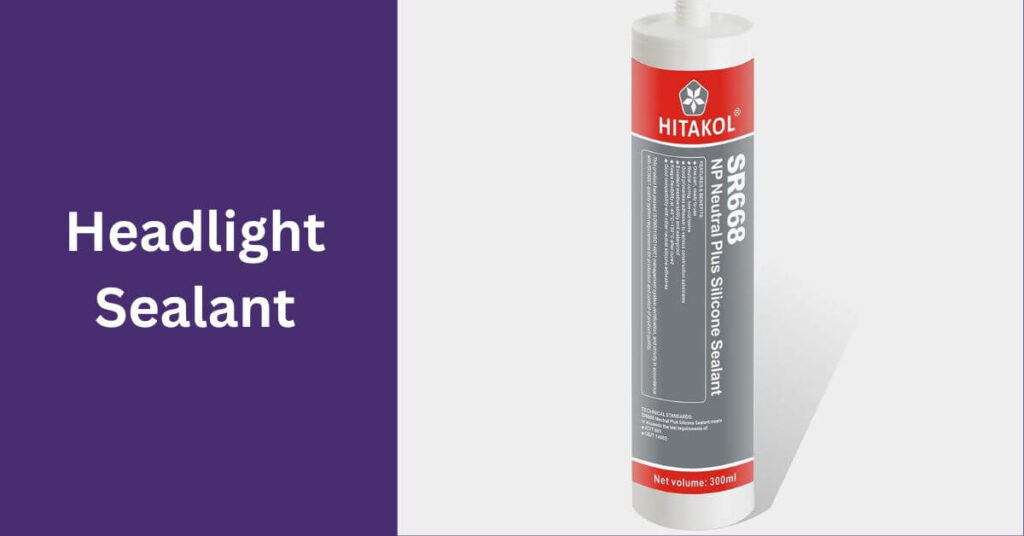
Advantages:
Headlight sealant is a more permanent solution for protecting headlights from dust and moisture.
It is easy to apply and provides long-lasting protection from the elements. It helps to reduce fogging and yellowing of headlights over time.
Disadvantages:
Headlight sealant is more expensive than other alternatives. It is not as easy to remove as other options. So it is important to make sure that you are using the right type of sealant for your vehicle.
Additionally, it may not provide the same level of protection as other alternatives.
Another
Common Problems With Dust Caps
Poor Fitting
Dust caps are designed to protect your headlights. But they have a poor fitting. Poor-fitting dust caps can cause air to be pushed into the headlight. This push can cause fogging and can reduce visibility while driving.
Furthermore, there can be gaps between the cap and the headlight. This gap can allow dust, dirt, and debris to get inside the headlight assembly and cause corrosion or damage.
Reduced Ventilation
Dust caps can reduce the amount of ventilation in the headlight assembly. This can cause heat to build up within the assembly and cause the bulb or the wiring to overheat. This can cause it to melt or short out.
Poorly fitting dust caps can also reduce airflow and can lead to premature bulb failure.
Installation
When considering the installation of headlight dust caps, first ask yourself the question Are headlight dust caps necessary for your car? If you do decide to install them, ensure that the dust caps are installed correctly.
If the dust caps are not installed properly, they can become loose and cause the issues mentioned above.
It is also important to ensure that the dust caps are the correct size and shape for your headlights. If the dust caps are too small or too large, they can cause the same issues.
Why?: It was fine till headlight caps, headlight films, and headlight sealants. But do you know, Rally Cars Have Tape on Their Headlights. Why do they do so?
FAQs
How do I choose the right size of the dust cap for my headlights?
When selecting the right dust cap for your headlights. It is important to measure the diameter of your headlight bulbs. This measurement will help you determine the size of the dust cap that you need for your headlights.
Can dust caps improve the performance of my headlights?
Dust caps can help protect your headlights from dirt and debris and will reduce the amount of light that is emitted from the bulbs. This can help improve the performance of your headlights by allowing more light to shine through.
Can I use headlight covers instead of dust caps?
Headlight covers can be used instead of dust caps to protect your headlights from dirt and debris. However, they are not as effective as dust caps because they do not provide a seal that prevents moisture from entering the headlights.
Can sealant be used instead of dust caps to protect my headlights?
Sealants can be used instead of dust caps to protect your headlights from dirt and debris. However, it is not as effective as dust caps because it does not provide a seal that prevents moisture from entering the headlights.
Can I reuse my dust caps if I replace my headlight bulbs?
You can reuse your dust caps if you replace your headlight bulbs. However, it is important to make sure that the dust caps are not damaged or worn before using them again.
How do I know if my dust caps are damaged or need to be replaced?
You can inspect the dust caps for any signs of wear or damage. If there are any cracks, tears, or other signs of damage. Then the dust caps should be replaced.
Can dust caps prevent moisture from entering my headlights?
Yes, dust caps can help prevent moisture from entering your headlights by providing a seal around the bulbs. This helps to keep moisture out and ensures that your headlights are protected.
Can I use aftermarket dust caps on my headlights?
Yes, you can use aftermarket dust caps on your headlights, but it is important to make sure that they are the correct size and fit properly. It is also essential to check that the dust caps are made of durable material. This will make sure that it will last for a long time.
